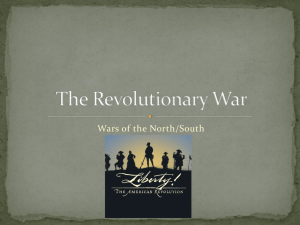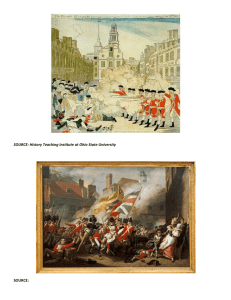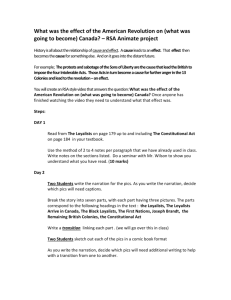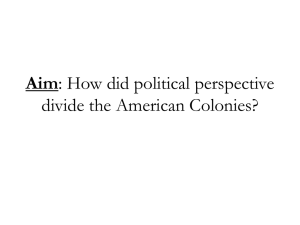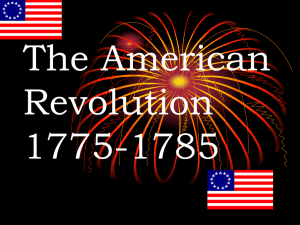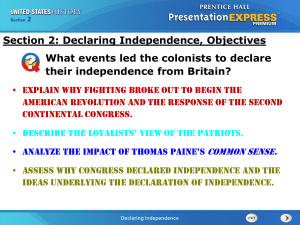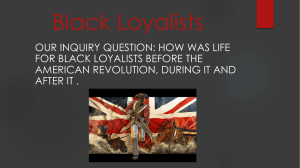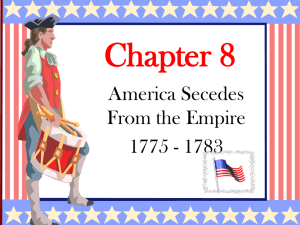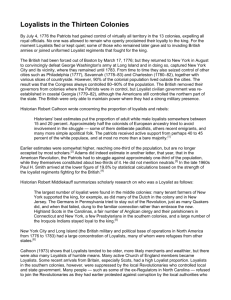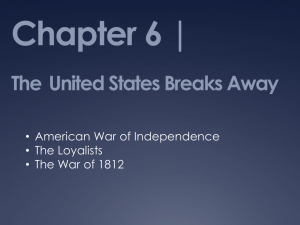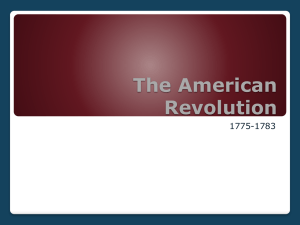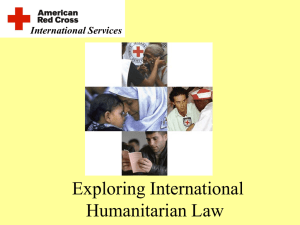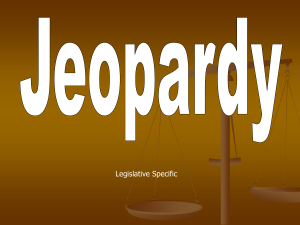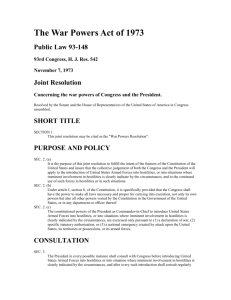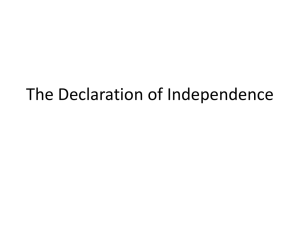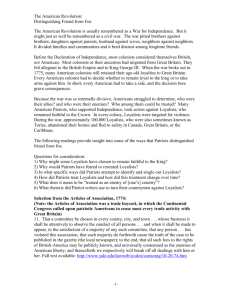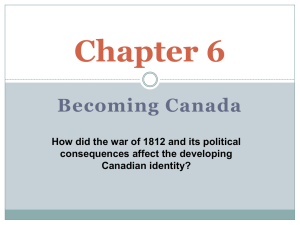Document
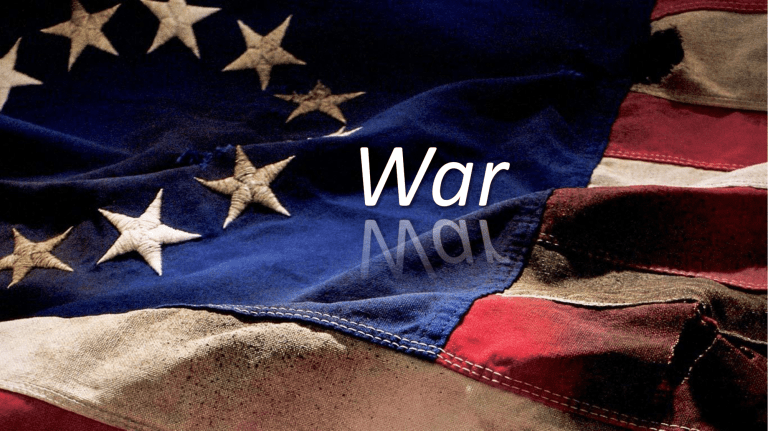
Introduction
Is war necessary?
This question divides people. There are reasons to support both sides of the issue. War is seen by most as a measure that should only be used if there is no other alternative. Some would argue that war should be an offensive strategy because if we perceive a country as a threat, we should be able fight them. And the others point out that war should never be used. Only diplomatic resolutions should be used. But no matter what opinion one may have on the issue, it seems that war is inevitable is our world. Throughout the history of the human race, we have been at conflict with each other because of our differences and failure to cooperate with each other.
Is war ever justified?
How would you argue? Take a look at the Iraq War for example. Saddam Hussein was a mass murderer who was responsible for the deaths of thousands of his own people. He tried to attain chemicals to make deadly weapons and failed to listen to the United Nations. The only alternative in this situation was to take him out of power. Even though this is a controversial issue, it seems that no matter what anyone says, war will happen and we have to realize that.
The reality of the situation.
Why is war evil? It kills people and destroys nations. Why is war good? It gives us a positive outlook on the future and allows us to be able to look over our mistakes. The human race has been embroiled in conflict since our first days.
The Effects of War
Here are some other relevant figures.
Our country sent more than two million men and women to fight in Iraq and Afghanistan.
More than 6,500 of them are dead. Tens of thousands were physically injured, including some 1,500 amputees. Iraq and Afghanistan were minefields, literally and metaphorically, rife with improvised explosive devices, or I.E.D.’s.
Of the two-million-plus Americans
who spent time there, studies suggest that 20 to 30 percent have come home with post-traumatic stress disorder. Depression, anxiety, nightmares, memory problems, personality changes, and suicidal thoughts: every war has its after-war, and so it is with the wars of
Iraq and Afghanistan, which have created some five hundred thousand mentally wounded American veterans.”
Pause here for a few seconds.
Take that in. Half a million Americans carry around a darkness they didn’t used to, because when our country went to war, they, unlike most of us, actually had to go.
There is also the financial strain of military engagement.
There’s the wrath of nations that disapprove of it and the possible repercussion from terrorists. With Syria, each of these has been discussed.
Freedom is not free!
The American Revolution
No one knows exactly how many people died in the American Revolutionary War, but eight years of fighting took a terrible toll. An estimated 25,700
Americans died in the war. Over 8,200 Americans were wounded. Some were left with permanent disabilities. The British military suffered about 10,000 deaths.
Many soldiers who survived the war left the army with no money. They had received little or no pay. Instead of back pay, the government gave some soldiers certificates for land in the West. Many men sold that land to get money for food and other basic needs.
Both the Congress and the states had borrowed money to finance the conflict. The war left the nation with a debt of about $27 million—a debt that would prove difficult to pay off.
Those who supported the losing side in the war also suffered. Thousands of Loyalists lost their property. Between 60,000 and 100,000 Loyalists left the
United States during and after the war. Most of the Loyalists went to Canada. There they settled new towns and provinces. They also brought English traditions to areas that the French had settled. To this day, Canada has both French and English as official languages.
The Revolution had been a civil war that left both Patriots and Loyalists with bitter memories. Patriots found it especially difficult to forgive the former
American general Benedict Arnold. In 1780 Arnold had betrayed his country by trying to turn over an American fort to the British. Throughout American history, the name Benedict Arnold is used to mean traitor.
The American Revolution
The American Revolution divided Americans along social, religious, and ethnic lines. New England and Virginia had many Patriots.
Loyalists were numerous in cities, New York State, and the South. Judges, councilors, and governors tended to be Loyalists. Many
Loyalists were clergy or members of the Church of England. Some Quakers were active Loyalists, although many were pacifists— people opposed to all war. The Patriots drew support from Congregationalists, Presbyterians, and Baptists.
Most Southern states did not allow African Americans to enlist. They feared that armed African Americans might lead slave revolts.
In contrast, the British offered enslaved persons their freedom if they joined British forces. Many slaves ran away to fight for the
British. In the North, however, about 5,000 African Americans served in the Continental Army.
The American Revolution was the largest Indian war in American history. All Native American nations east of the Mississippi were caught up in the fighting. Some Native Americans, like the Mohawks, joined the British because they feared Americans would take
Native American land. Others, who lived within areas settled by the colonists, sided with the Americans.
In Summary
Many of the participants of the Continental Congress at Philadelphia, assumed that victory over the British would be easy. In reality, it was George Washington, who stated the campaign would be long and difficult.
The War was fought on several fronts. America formed the Continental army with the support of France. While Britain relied on German mercenaries and Irish troops.
Following early American successes at Lexington Concord and the Battle of Bunker's Hill, the British left Boston by sea. In early 1776, the
British General Howe arrived with 30,000 men, moved down from Canada towards New York in an attempt to surround New England.
This march, however, met with disaster, and 5,700 British, German and Loyalist troops under the command of Major General John
Burgoyne surrendered at Saratoga.
The remaining British forces retreated from Philadelphia to New York and, believing the slave-owning colonies more supportive of British rule, concentrated their campaign on the south. In 1781, the Americans with support from the French secured Chesapeake Bay and the
British forces surrendered at Yorktown (October 1781), destroying any remaining British hope of eventual victory.
In Legacy
The final Treaty of Paris, which ended the Revolutionary War, was signed on September 3, 1783. The Americans won favorable terms in the peace treaty:
1.
The United States was independent.
2.
Its boundaries would be the Mississippi River on the west, Canada on the north, and Spanish Florida on the south.
3.
The United States would receive the right to fish off Canada’s Atlantic Coast, near Newfoundland and Nova Scotia.
4.
Each side would repay debts it owed the other.
5.
The British would return any enslaved persons they had captured.
6.
Congress would recommend that the states return any property they had seized from Loyalists.
Neither Britain nor the United States fully lived up to the treaty’s terms. Americans did not repay the prewar debts they owed British merchants or return
Loyalist property. The British did not return runaway slaves.
The Treaty of Paris led to boundary disputes with Spain and Native American interests
Native Americans who lived east of the Mississippi found themselves living within the boundaries of a new nation that was intent on westward expansion.
Their lands were now at risk.
The New Nation
The success of the Revolution challenged the existing world order. For the first time a colonial rebellion against an imperial power had succeeded.
This offered political reformers a chance to prove that republicanism, the idea that a country can be governed by the people, and without a king, could work.
The states also realized early on that they needed a national government, if only to conduct the war. By 1777, the Continental Congress had drafted a plan: the Articles of Confederation which gave very limited powers to the central government—little more than waging war and signing treaties.
People also began to see a conflict between slavery and the ideal of liberty.
Defining Religious Freedom for many Americans, central to the ideal of liberty. People such as James Madison and Thomas Jefferson called for a
“separation of church and state,” meaning that the state should not be involved in religious affairs.
In 1777 Thomas Jefferson proposed his Virginia Statute for Religious Freedom. In it, he claimed that people have a “natural right” to freedom of opinion, including religious opinion. Later, it became the basis of the religious rights guaranteed by the Bill of Rights in the U.S. Constitution.
The great challenge that lay ahead was how to remain united as a nation of independent states, despite regional and religious differences.
Declaring War
The Constitution of the United States divides the war powers of the federal government between the Executive and Legislative branches: the President is the
Commander in Chief of the armed forces, while Congress has the power to make declarations of war, and to raise and support the armed forces. Over time, questions arose as to the extent of the President's authority to deploy U.S. armed forces into hostile situations abroad without a declaration of war or some other form of Congressional approval. Congress passed the War Powers Resolution in the aftermath of the Vietnam War to address these concerns and provide a set of procedures for both the President and Congress to follow in situations where the introduction of U.S. forces abroad could lead to their involvement in armed conflict.
The first part of the War Powers Resolution requires the President to consult with Congress before introducing U.S. armed forces into hostilities or situations where hostilities are imminent, and to continue such consultations as long as U.S. armed forces remain in such situations. The President must comply with any time he introduces U.S. armed forces into existing or imminent hostilities is particularly significant because it can trigger a 60 day time limit on the use of U.S.
forces.
U.S. Presidents have consistently taken the position that the War Powers Resolution is an unconstitutional infringement upon the power of the executive branch. As a result, the Resolution has been the subject of controversy since its enactment, and is a recurring issue due to the ongoing worldwide commitment of U.S. armed forces.
MAJOR US CONFLICTS
American Revolution (1775–1783) Great Britain forced its 13 American colonies to pay taxes but did not give them representation in the British
Parliament.
War of 1812 (1812–1815) British interference with American trade, impressment of American seamen, and “war hawks” in Congress calling for western expansion into British territory led to war.
Civil War (1861–1865) Economic and political rivalry between the South and the North grew into a civil war fought over slavery and states' rights.
World War I (1914-1918) This world war took place in the Middle East, Pacific, Atlantic, Europe, and Africa. 20-60 million people were said to be killed.
World War II (1939-194) Battlefields took place worldwide and it is estimated that 40-70 million people were killed.
Korean Conflict (1950-1953) located in the Korean Peninsula is said to of taken the lives of 2-3 million people were killed.
Vietnam War - From 1959 to 1975 in South East Asia, 2-5 million people were killed as a result of this war.
Afghan Civil War (1979 – present) in Afghanistan. So far, it is estimated that 1-2 million people have been killed
Iraq War - Ever since 2003 in Iraq, it is said that 90,805-1,200,000 people have lost their lives so far in this war.
